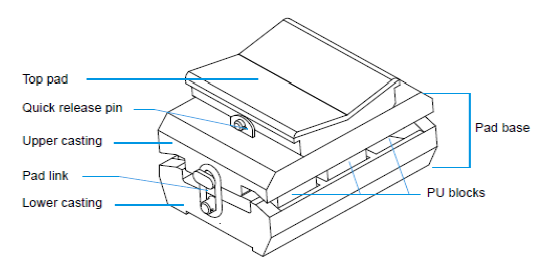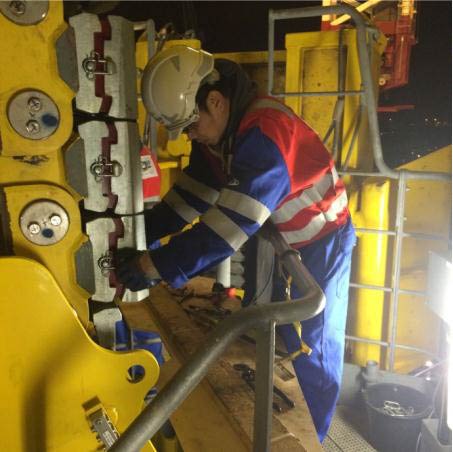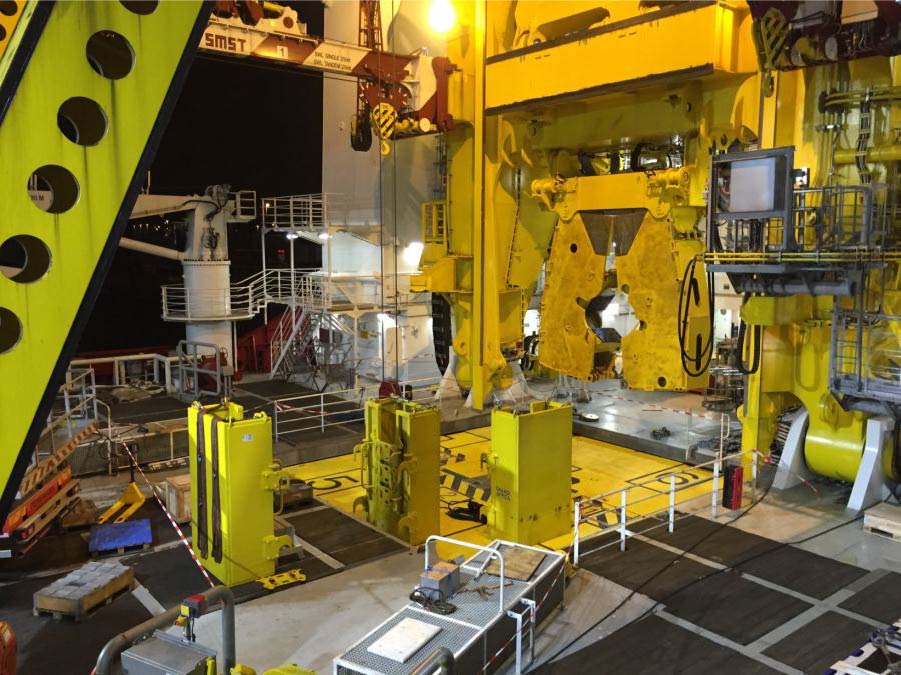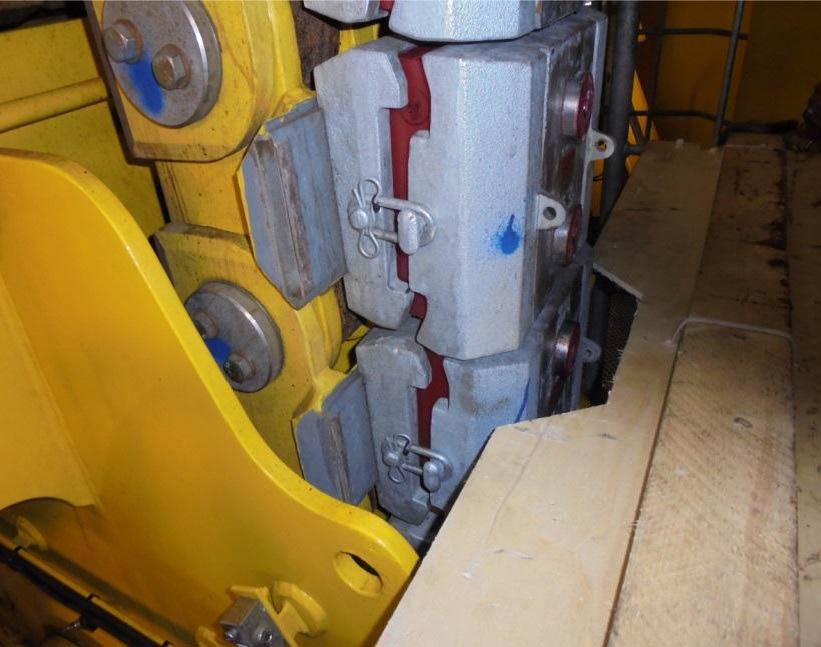High potential near-miss: Dropped object
A member has reported a high potential near miss incident in which an object of 1.24 kg fell 36m. The incident occurred during removal of tensioner pad upper castings on a tiltable pipelay system. This equipment had two levels of tensioners called the upper and lower tensioners. Each level of the tensioner comprised a total of 384 pads, conducted on 4 rotating chains. The crew had been tasked with removing the upper tensioner pad upper castings, as these were required to be removed so that they could be sent away for machining. The task involved removing and refitting pads and casting to a total weight of approximately 27te. These were manually placed into the pad baskets suspended on the rear of the tensioner platform.
During the removal of a tensioner pad upper casting on track 4 of the upper tensioner section, one of the PU (polyurethane) blocks (there were three PU blocks per pad configuration) slipped out upon removal and fell between the track guide, falling approximately 36m to the deck below. No personnel were nearby at the time; the nearest person was 10-15m away. Had the PU block (which weighed 1.241kg and fell 36m) hit someone, the outcome had the potential to result in a fatality.



Our member noted the following:
- This was scheduled to be carried out by personnel from the supplier of the pipelay system, but owing to manpower issues, vessel personnel carried out the task;
- This was the first time that vessel personnel had carried out this task on the pipelay system. 80 of the 96 castings had been safely removed at the time of the incident;
- One shift carried out this task with the track ‘paying out’ so that there would always be a pad assembly underneath the work area (until the last casting has to be moved), significantly reducing the potential for a dropped object. This was not communicated to the other shift;
- The PU block landed on the deck outside of the safety barriers put in place for this task and finally came to rest approximately 7m away from where it first landed;
- This task was strenuous, ergonomically challenging and with manual handling problems that arose as the work progressed, resulting in several missed opportunities for an intervention to be made and failures to stop the job.
Our member made the following initial observations on the causes of the incident (subject to further investigation):
- There was no control of work – no permit to work, no risk assessment;
- There was inadequate job planning and a lack of knowledge of the task;
- There was poor hazard awareness and poor risk perception of the task;
- There were inadequate communications between crew at shift handover;
- The design of the barrier handrail and the weight of the castings makes this task difficult for the workforce. A review has been conducted with the manufacturer of this equipment with regard to changing the layout of the barriers;
- Procedures for this task were still in draft;
- There was a failure to stop the job.


Dropped objects were the most common single subject of reported IMCA Safety Flash incidents during 2015. It would be beneficial for members to bring this topic once again to the attention of vessel crews, to drive home the lessons that are clearly not yet being learnt. Members are reminded of IMCA safety promotional material as follows:
- Avoiding dropped objects (pocket card)
- Avoiding dropped objects (poster)
Members may wish to refer to the following incidents (search word: pipelay):
Safety Event
Published: 15 January 2016
Download: IMCA SF 02/16
IMCA Safety Flashes
Submit a Report
IMCA Safety Flashes summarise key safety matters and incidents, allowing lessons to be more easily learnt for the benefit of all. The effectiveness of the IMCA Safety Flash system depends on Members sharing information and so avoiding repeat incidents. Please consider adding [email protected] to your internal distribution list for safety alerts or manually submitting information on incidents you consider may be relevant. All information is anonymised or sanitised, as appropriate.
IMCA’s store terms and conditions (https://www.imca-int.com/legal-notices/terms/) apply to all downloads from IMCA’s website, including this document.
IMCA makes every effort to ensure the accuracy and reliability of the data contained in the documents it publishes, but IMCA shall not be liable for any guidance and/or recommendation and/or statement herein contained. The information contained in this document does not fulfil or replace any individual’s or Member's legal, regulatory or other duties or obligations in respect of their operations. Individuals and Members remain solely responsible for the safe, lawful and proper conduct of their operations.
